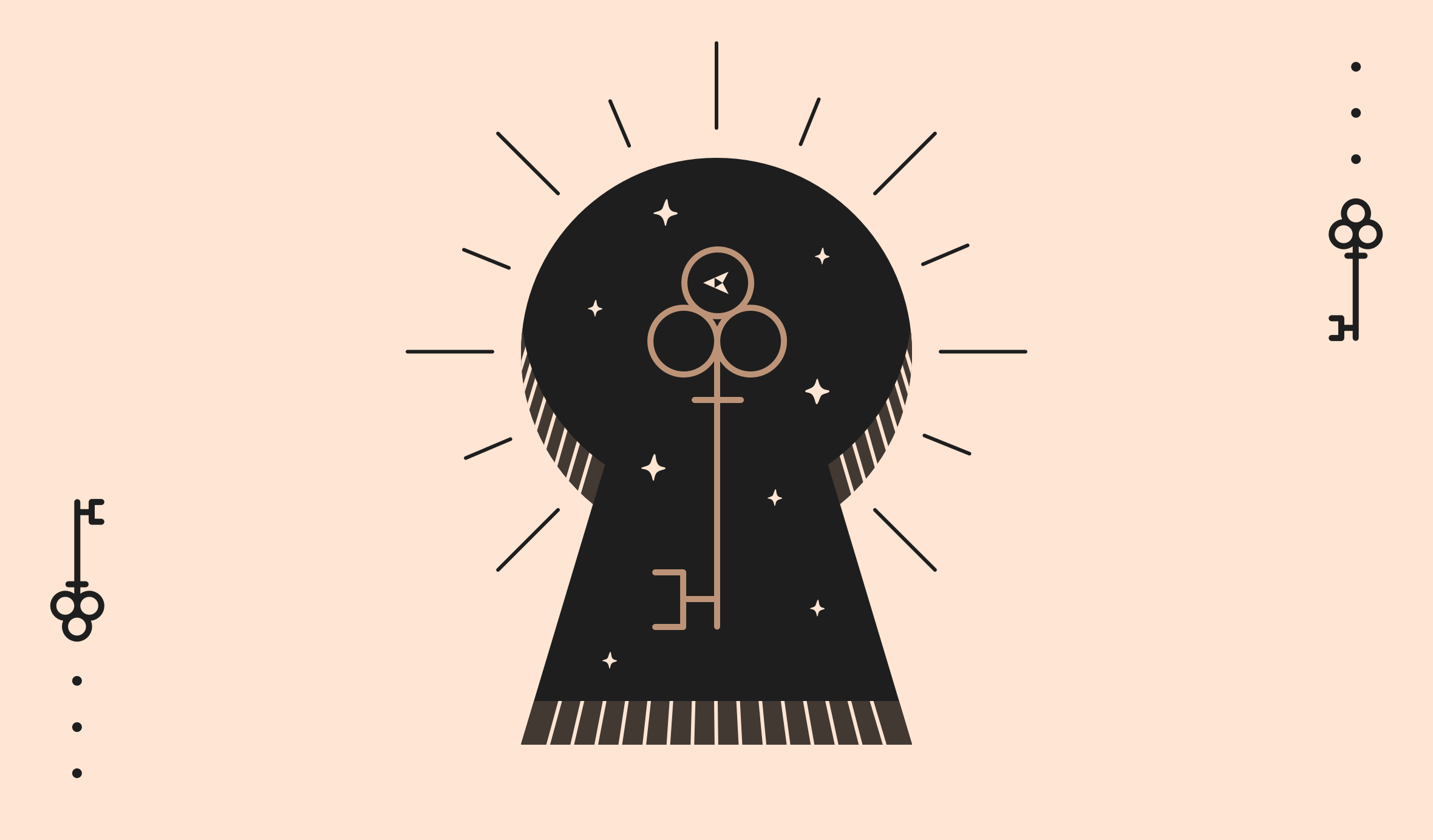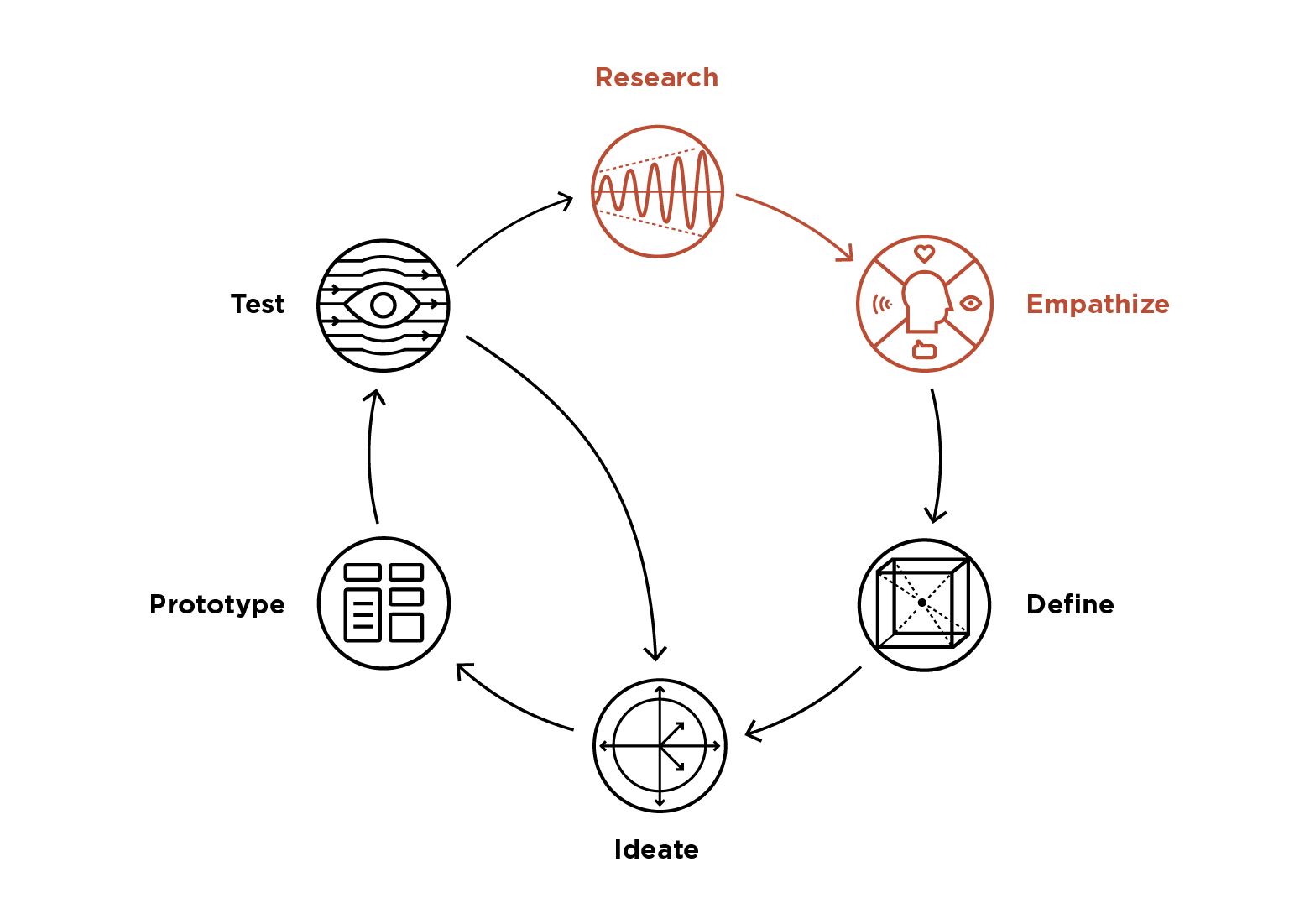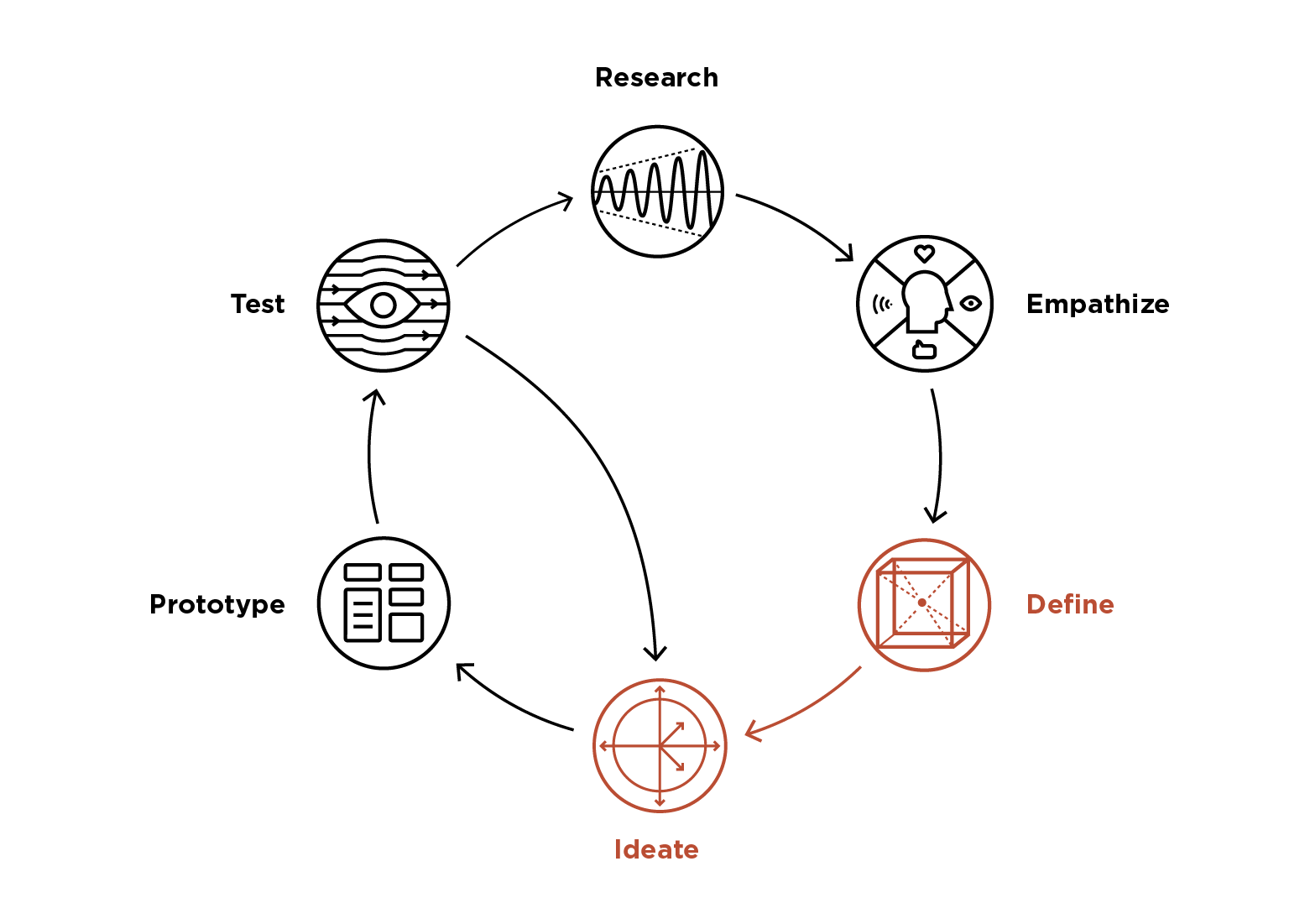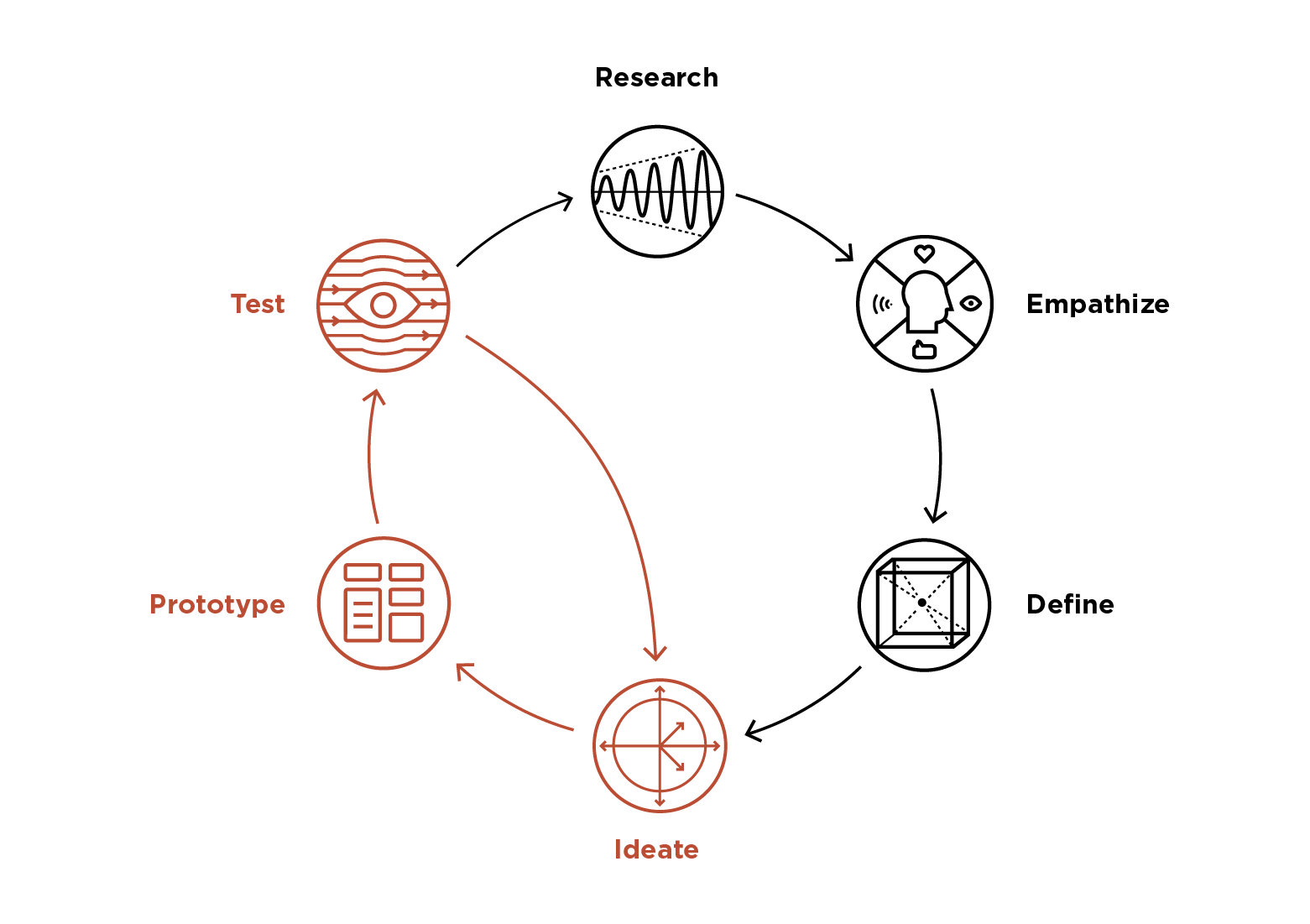The Secret of Our Success: Draw Backwards to Drive Forward

We coach our clients to “draw backwards” to create meaningful customer experiences. But what does that mean, exactly? It means taking the time to get a 360-degree view of the opportunity before creating a solution. In other words, it means stepping back, drawing the bow backwards, and focusing on the target so you can be sure you’ll hit the bullseye.
How do we coach our clients to do this? We use a finely-tuned research and strategic planning “Draw–Backwards Process” to look beyond the user interface into our clients’ core business problems. Then we hold ourselves and our clients accountable with a “what by when” culture that identifies who is doing what, by when. And, like all good designers, we keep the focus on the customer and end users throughout the process.
When faced with a new business challenge it can be tough to know where to start. But it can be even tougher to resist the urge to jump right in with solutions. Whether it’s nailing the right marketing strategy, constructing strong internal workflows, or enhancing customer experience through product improvements, you want to have a proven process that will keep you on the right path.
We’ve honed our “Draw backwards Process” over nearly 20 years of work with clients across all kinds of industries through every type of business problem. Here are the three phases that can help you drive unexpected delight for your customers and success for your business.
Phase 1: Research and Empathize
Before you even think about solutions, you need to understand everything you can about the opportunity in front of you. That’s why we lead every engagement with research to make sure our clients understand every user in the process, and their challenges. We talk to as many internal and external stakeholders as possible to get a clear 360-degree view of their assumptions, needs, and pain points. Then, we study the external environmental and market factors that might impact any potential solution.

Many teams jump right into solutions. We’ve seen plenty of great ideas get driven off a cliff this way. How can you know how to get somewhere if you don’t first have a clear vision of where you’re going and the challenges to getting there? How will you stay on the right path if you can’t identify the assumptions that could lead you astray?
Not only does this step define and clarify the path ahead problem, but it starts to draw out unexpected solutions. By listening to your employees, you can uncover ways they're already delighting customers. Then you can build on these insights to create large-scale solutions.
Keep in Mind
Your stakeholders are really anybody who interacts with your process, product, or business internally or externally. Sit down and make a list of all the possible people this could include and make plans to reach out to them. Here are just a few examples of stakeholders to consider:
- Current Customers
- Potential Target Customers
- Internal Users/Employees/Stakeholders (Across management levels and business divisions)
- Front-Line Customer-Facing Service Providers (Technicians, Customer Service Reps, etc.)
Phase 2: Define and Ideate
You need a solid business strategy that will help you grow and innovate. That’s why we bring the insights from our research into a strategic ideation workshop with clients to review our initial assumptions, understand the biggest pain points of customers and employees, sketch out potential solutions, and create a roadmap for future prototyping and testing.

This process is not just for user interfaces and design elements. We’re looking in our workshops for ways to improve things like marketing messaging, new service and product options, and ideas to delight customers. These ideation intensives help us all take a step back and see the whole playing field instead of jumping right in with solutions.
Design is in our DNA, but ultimately we’re in the business of solving business problems.
Yes, design is in our DNA, but ultimately we’re in the business of solving business problems. We know our clients don’t always have the in-house resources, or time, to look at their immediate problems and product requests at a strategic level. That’s why we give them an outside perspective to think strategically about these problems and the extra brain and design power to turn that strategy into real content and product features.
Keep in Mind
Workshops can be as big or as small as you need, but they should always be thoughtfully planned with activities that will help your team process the information uncovered in Phase 1. Here are just a few of our favorite workshop activities:
- Establishment of user personas
- Build empathy maps and user journeys based on persona data
- Create lean business model canvases
- Define assumptions
- Rapid ideation and low-fidelity prototypes
- Design test experiments to execute
- Build project/product roadmaps
Phase 3: Prototype, Test and Repeat

Coming out of Phase 2, we now have some preliminary models of what might work to solve the biggest pain points and drive us towards our identified business opportunities. We’ve examined our assumptions and reviewed everything we learned about our customers and stakeholders. Now, it’s time to test those drafts and models to explore their feasibility and effectiveness.
When the C-suite gives you a budget, you have to prove that you have the right strategy to solve the right problems.
We take the time to build out these initial solutions into prototypes that can be tested by real people. We then take that feedback to build the next draft solution and test it through a cycle of perpetual improvements that lead to exponential growth.

When the C-suite gives you a budget, you have to prove that you have the right strategy to solve the right problems. The value of research and strategic planning can easily get lost in mediocre solutions that haven’t been tested and ultimately won’t work. Not only is it important to take the time to do your homework on the front end, but you have to test the potential answers throughout the process.
If you assume you have the right answer the first time, those assumptions will often burn out a limited budget through solutions that aren’t viable. We want our clients to be able to walk into the executive suite to pitch a solution knowing that they can confidently calculate and demonstrate the ROI of their solution.
Keep in Mind
Effective prototyping and testing takes time and effort, all of which will pay off in the final solution. Try not to cut corners and think carefully about what it will take to test your solution in as real of an environment as possible. Here are a few of our best practices:
- Build prototypes with various levels of fidelity
- Create, groom and adjust plan in bi-weekly sprints
- Test and measure progress of each iteration
- Conduct usability testing, surveys and other experiments
- Learn, adjust, and repeat—favor flexibility over rigidity and stay open to new options
A Proven Process for Success
Our “Draw Backwards Process” requires careful attention to detail and a continuous commitment to create truly meaningful experiences and solutions for customers. If you’re feeling weighed down with problems you need to solve for your business and just don’t have the team to handle all of it, we’re here to help. We can provide the strategy for your rock star team of designers and developers to execute. They’ll have the freedom to put their talent and effort into creating a solution and you’ll have the confidence to know you’re heading in the right direction.
Contact us to see how we can help you draw backwards to drive forward.